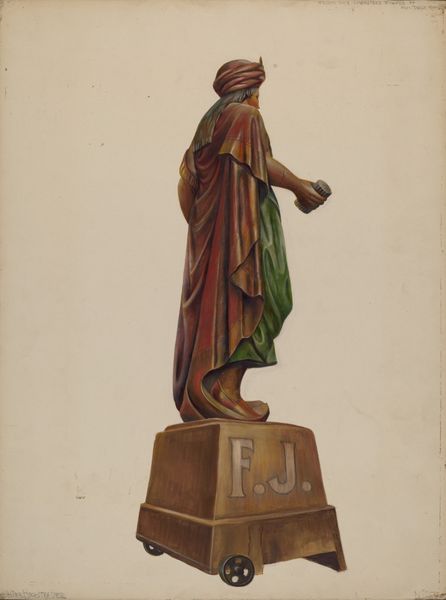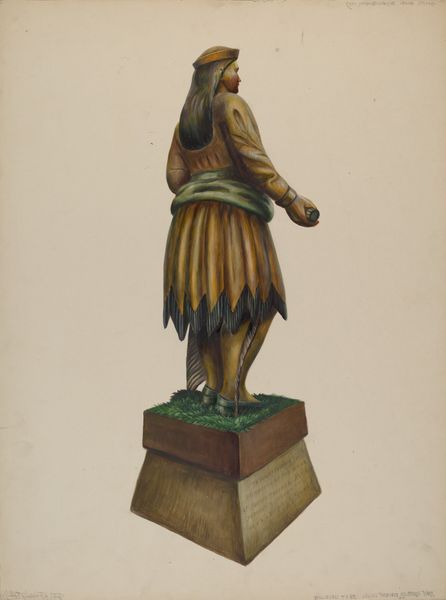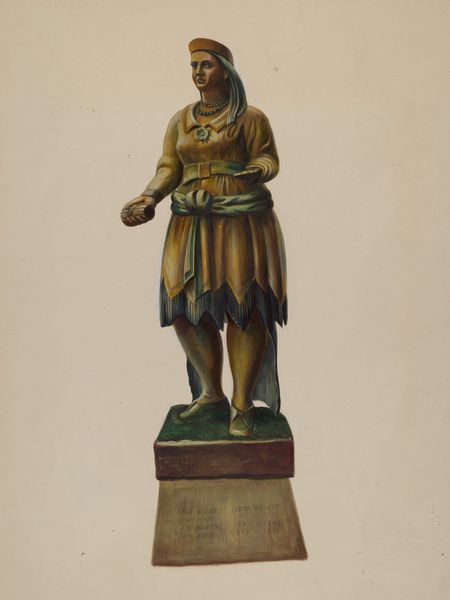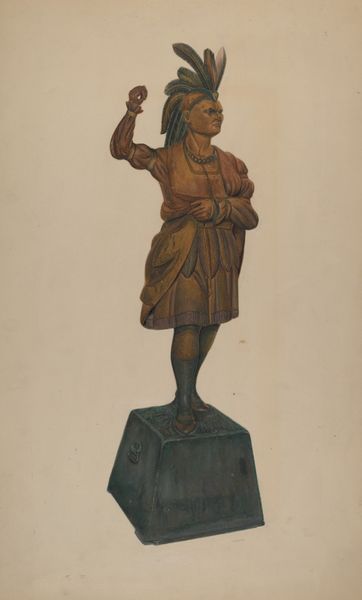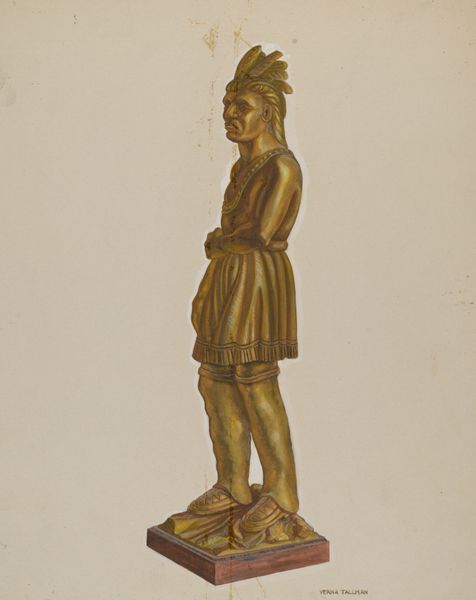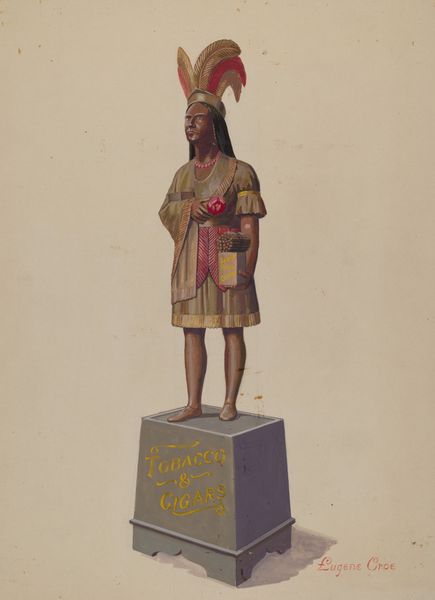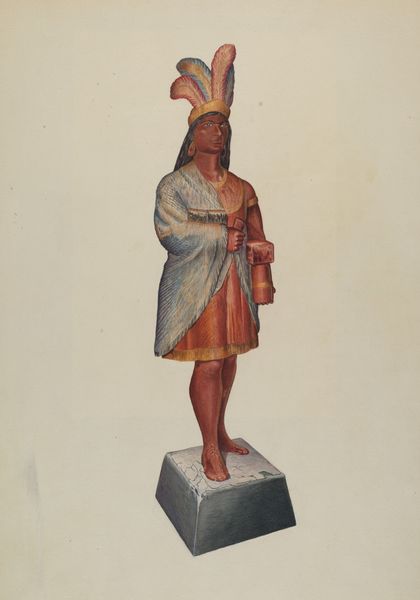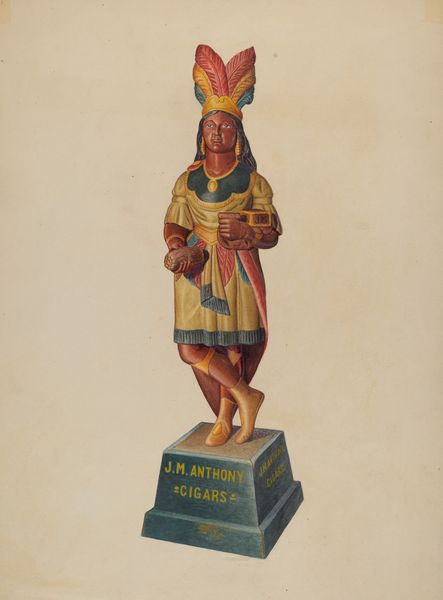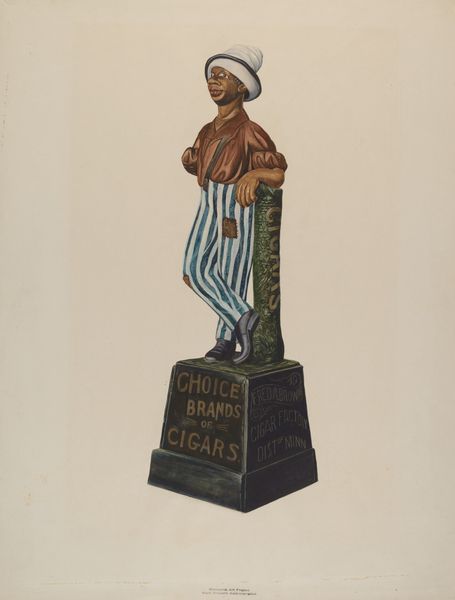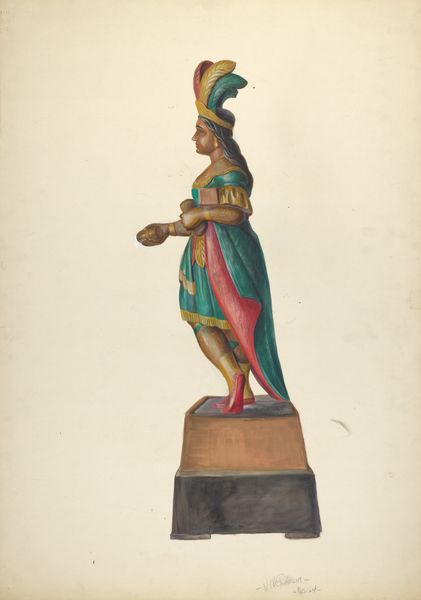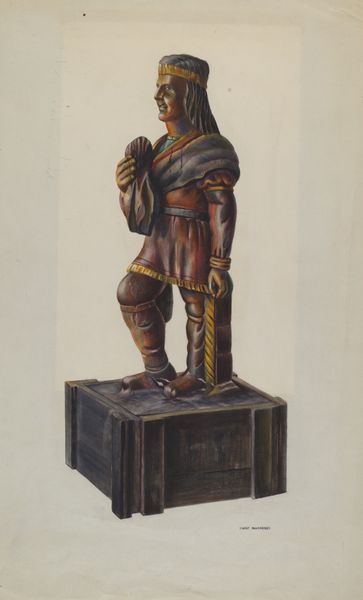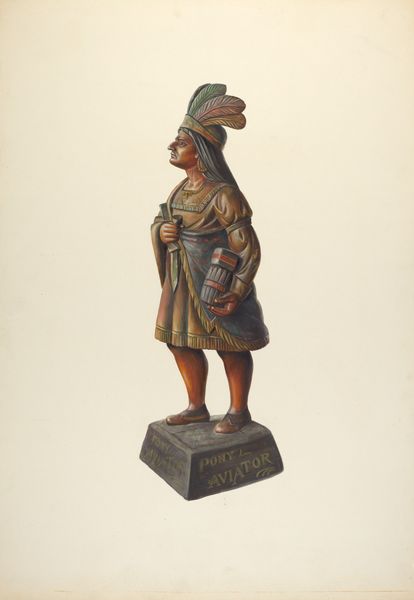
drawing, painting, paper, watercolor
#
portrait
#
drawing
#
painting
#
figuration
#
paper
#
watercolor
Dimensions: overall: 71.6 x 50.8 cm (28 3/16 x 20 in.) Original IAD Object: 75 3/4" high; 37 3/4" wide
Copyright: National Gallery of Art: CC0 1.0
Curator: I'm struck by the immediate theatricality of this watercolor and gouache work, created circa 1937. Its author remains anonymous, yet the subject matter is remarkably clear. Editor: The figure is fascinating – rigid and slightly forlorn, almost…melancholy? It doesn’t immediately shout advertisement at me, despite the base it stands on. Curator: Yes, its structural rigor intrigues. Observe the stark geometric lines of the base, which contrast intriguingly with the curved form of the figure it supports. Notice how the artist used a rather muted color palette to model depth, volume, and highlight key areas like the face, and the feather ornamentation. Editor: But isn't the subject even more compelling than the technical artistry? Consider the symbolism embedded within this "Cigar Store Indian," especially given the commercial aspect, an icon representing Native American culture, utilized to sell tobacco. The figure holds an almost totemic presence, linking commerce with a sense of history and cultural appropriation. Curator: You point to interesting historical and cultural complexities. The work clearly references pre-existing modes of representation, like portraiture, while also dismantling the presumed boundaries between representation and commodification. Its construction underscores the commercial reinterpretation of indigeneity through its materials and figuration. Editor: Precisely. Think of the cultural weight this image would carry: the complex layers of identity, stereotypes, and the history of Native American representation—or misrepresentation, I should say—all funneled into a symbol designed to draw customers. The feathers, the skin tone... everything is laden with meaning and potential misinterpretations. Curator: So, we might view this not as just an object of mere commercial utility, but rather an inadvertent reflection on societal power structures and representational strategies prevalent at the time, mediated through formal strategies? Editor: Indeed. It encapsulates a rather unsettling collision of cultures, expectations, and commerce. It speaks of commodification but gestures towards something more complicated, a visual paradox we're still untangling today. Curator: A sobering but compelling realization – the simple geometry and composition opens into more complex understandings of commerce and social power. Editor: Agreed. And this little artwork provides much more than simple enjoyment but deep insight into American cultural history and commercialization of its visual signifiers.
Comments
No comments
Be the first to comment and join the conversation on the ultimate creative platform.

